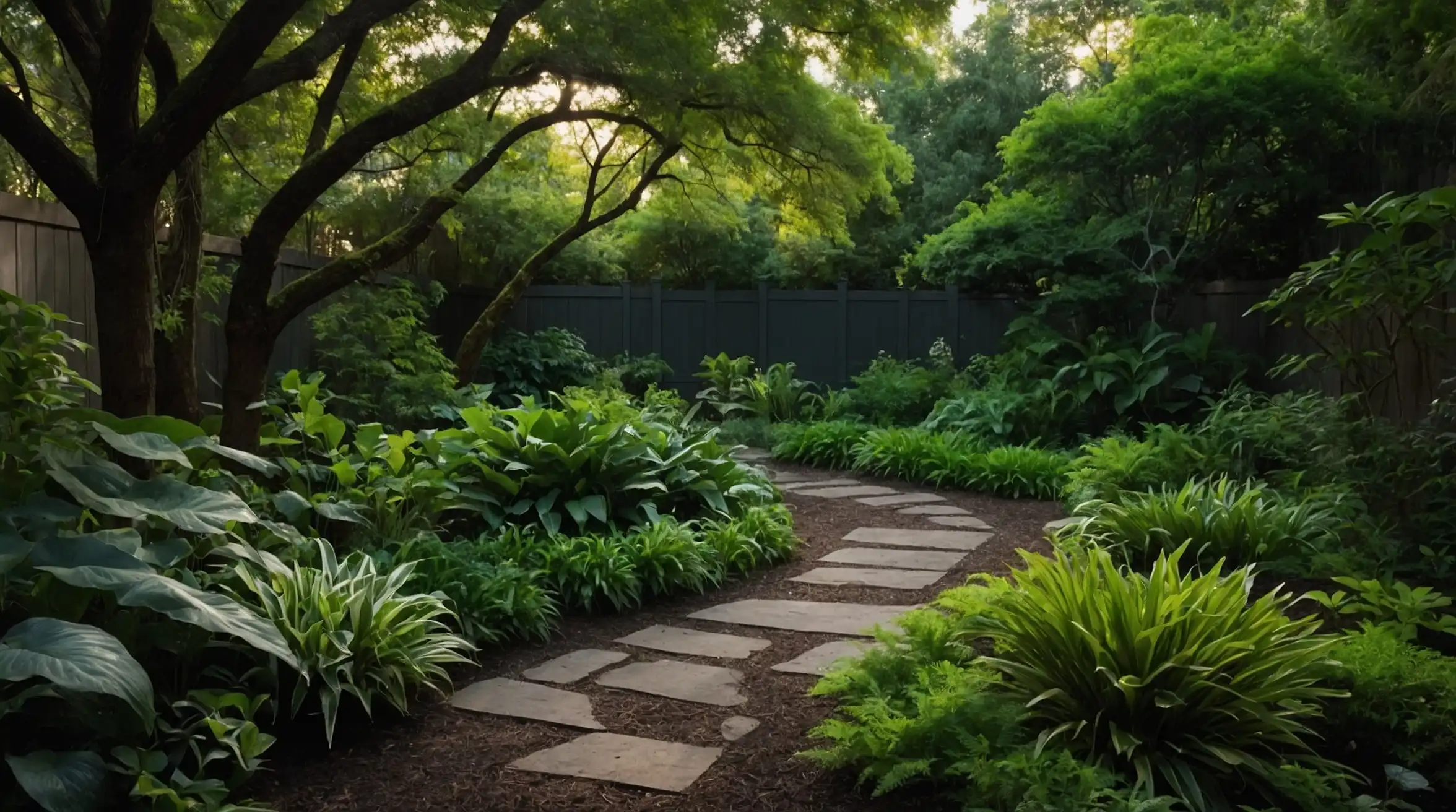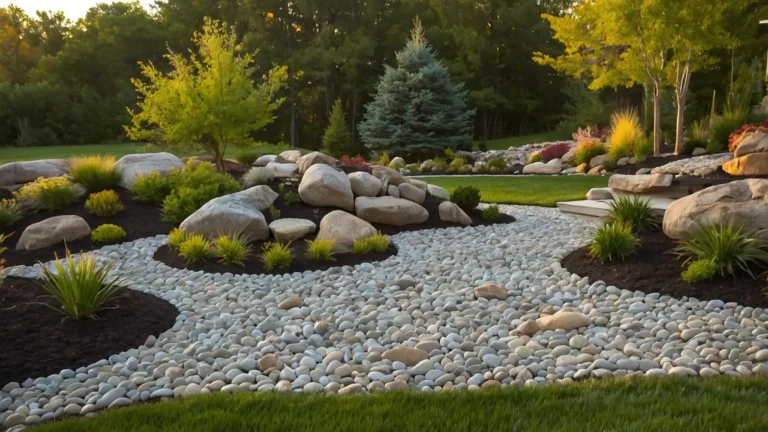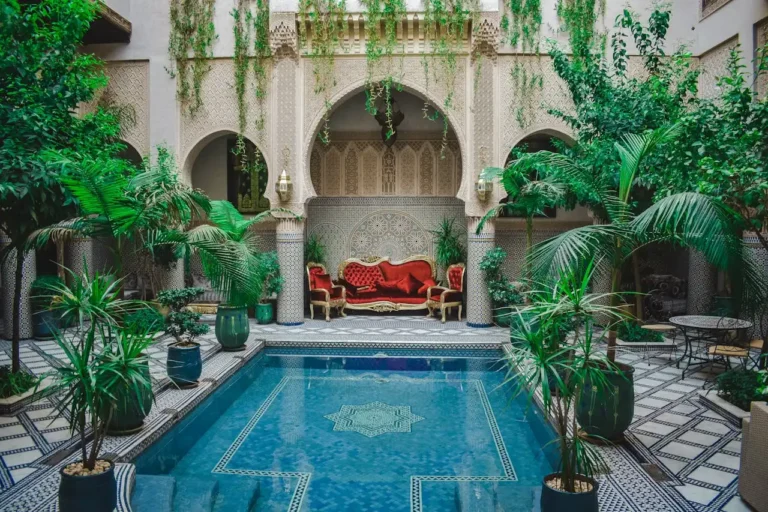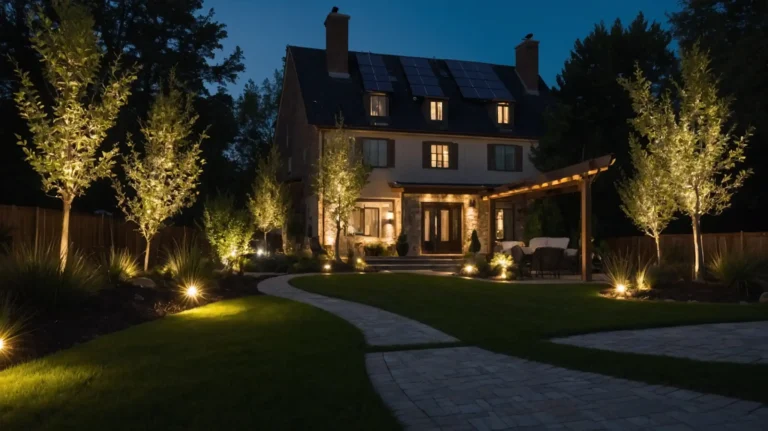17 Gorgeous Shade Garden Layouts That Transform Dark Corners Into Green Sanctuaries
Struggling with those shady spots in your garden that seem impossible to beautify? You’re not alone.
Many gardeners face the challenge of transforming dark, overlooked areas into vibrant garden spaces.
Shade gardens offer unique opportunities to play with textures, foliage, and unexpected bursts of color.
With the right design approach, these cool retreats can become the most enchanting parts of your landscape.
Let’s explore 17 innovative layout ideas that will help you maximize those shadowy corners and transform them into your garden’s star attractions.
1: Woodland Wanderer Path
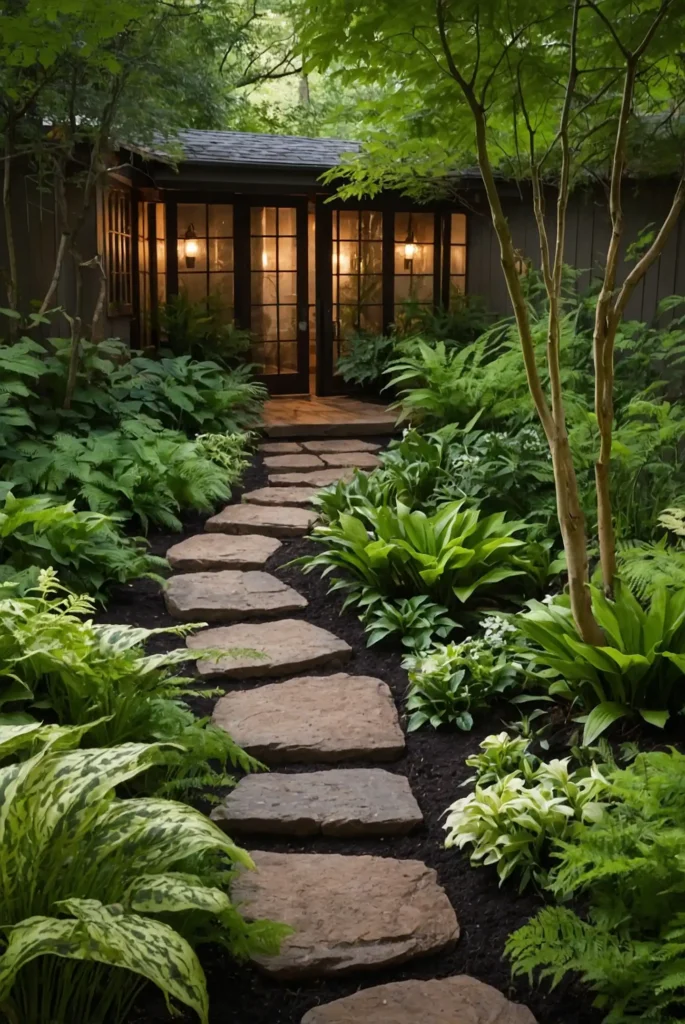
Create a meandering path through your shade garden using stepping stones or mulch.
This design mimics a forest floor, making visitors feel like they’re discovering a secret woodland.
Position shade-loving ferns and hostas along the edges to soften the journey. Add strategic lighting to highlight interesting plant shapes after dark.
This layout works particularly well for side yards or long, narrow spaces that receive minimal sunlight.
2: Multi-Level Shade Terraces
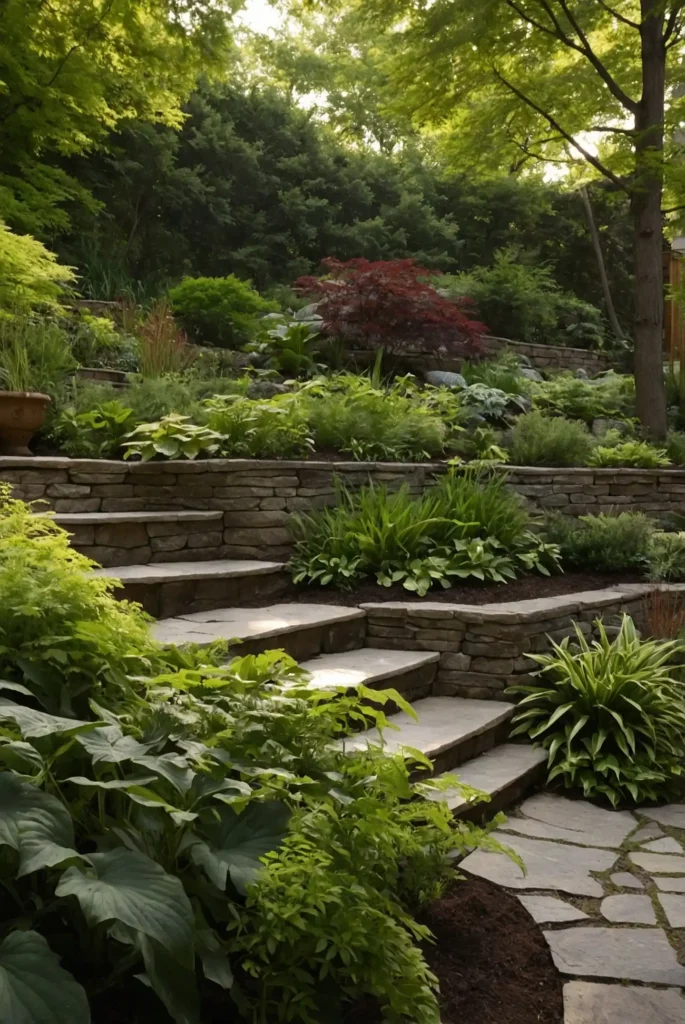
Take advantage of natural slopes by creating tiered garden beds that capture visual interest from multiple angles.
Each level can showcase different shade-tolerant plants.
Use retaining walls of stone or wood to define the spaces clearly. The uppermost terrace might feature taller specimens like Japanese maples or dogwoods.
Lower levels work perfectly for groundcovers like sweet woodruff or foam flower that spill gracefully over edges.
3: Moss Garden Sanctuary
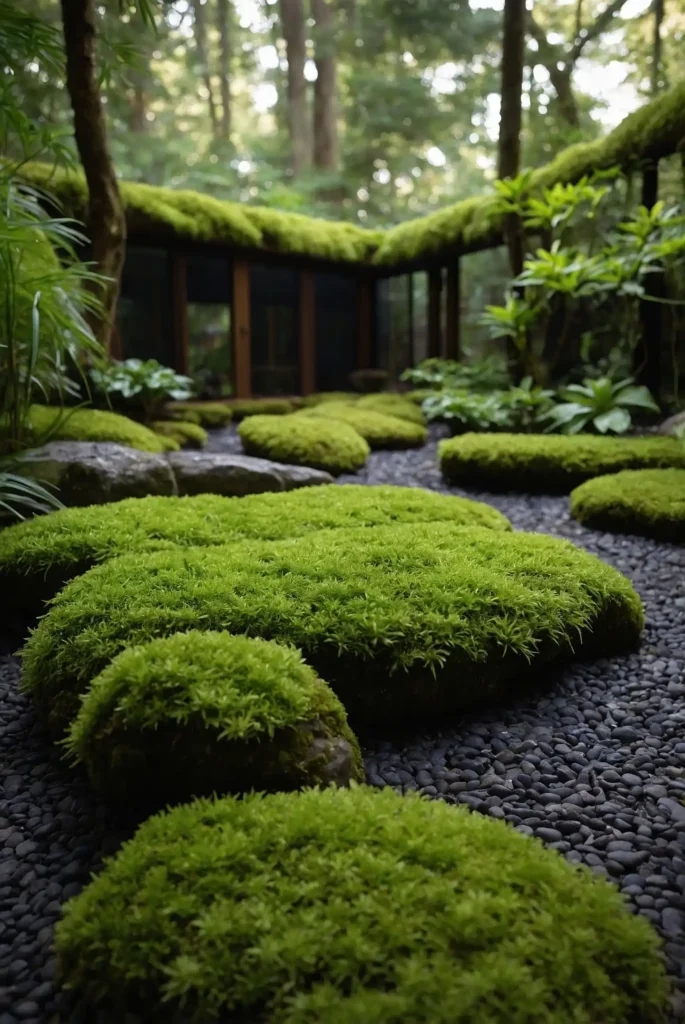
Embrace the natural tendency of moss to thrive in shady, moist areas by designing an entire section around these velvety plants.
Create undulating mounds of soil covered in various moss species.
Place weathered stones, small water features, or miniature Japanese-inspired elements throughout.
The result is a meditative space that appears ancient and established.
This low-maintenance option requires minimal intervention once established, needing only occasional misting during dry periods.
4: Shade-Friendly Container Clusters

Group containers of various heights, materials, and sizes to create an instant shade garden that can evolve as your tastes change.
Use lightweight pots that can be rearranged seasonally.
Fill with shade stars like heucheras, Japanese forest grass, and bromelias. The mobility of this layout allows you to adjust for seasonal light changes.
This approach works brilliantly for patios, porches, or apartment balconies that receive minimal direct sunlight.
5: Tropical Shade Retreat
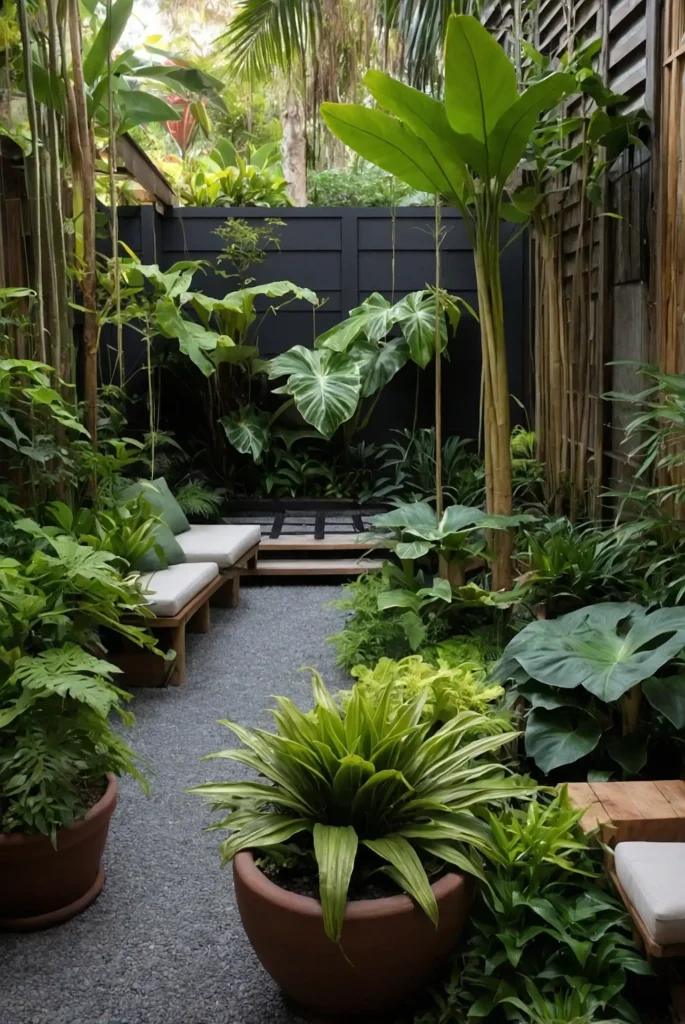
Create a lush, exotic feel using large-leaved shade plants that evoke tropical environments.
Center your design around statement plants like elephant ears, cast iron plants, or Japanese aralia.
Incorporate comfortable seating where you can enjoy the cooling effect of your shade oasis.
Add humidity-loving air plants or staghorn ferns mounted on tree trunks or walls.
This layout transforms shady spots into vacation-like experiences, especially effective in humid climates.
6: Shade Rain Garden

Turn problematic wet, shady areas into ecological assets by designing a rain garden that captures runoff.
Shape the land to create a gentle depression that holds moisture temporarily.
Plant moisture-loving shade species like astilbe, cardinal flower, and Japanese iris.
This functional layout not only looks beautiful but also prevents erosion and water issues.
The varying moisture levels created allow you to grow a wider variety of shade plants than in uniformly dry conditions.
7: Formal Shade Symmetry
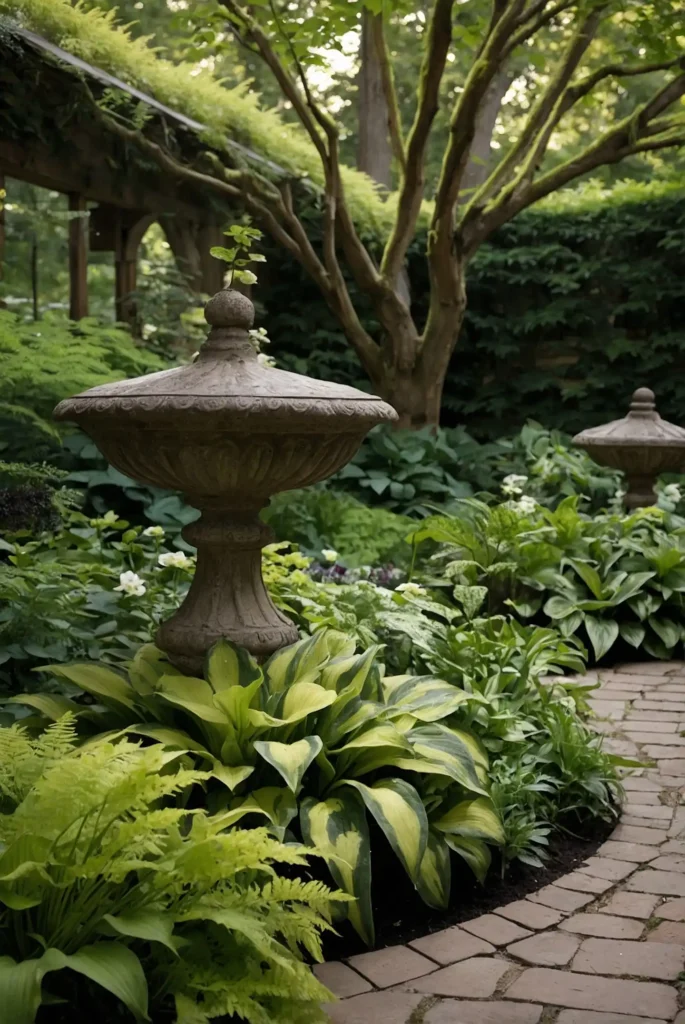
Challenge the notion that shade gardens must be wild and woodland-like by creating formal symmetry.
Design geometric beds with clearly defined edges using boxwood or other shade-tolerant hedges.
Within these structured spaces, plant coordinated groupings of hostas, ferns, or heucheras. Include centered focal points like birdbaths or small statuary.
This unexpected approach brings order to shady spaces and works particularly well near traditional architecture.
8: Stumpery Garden Design
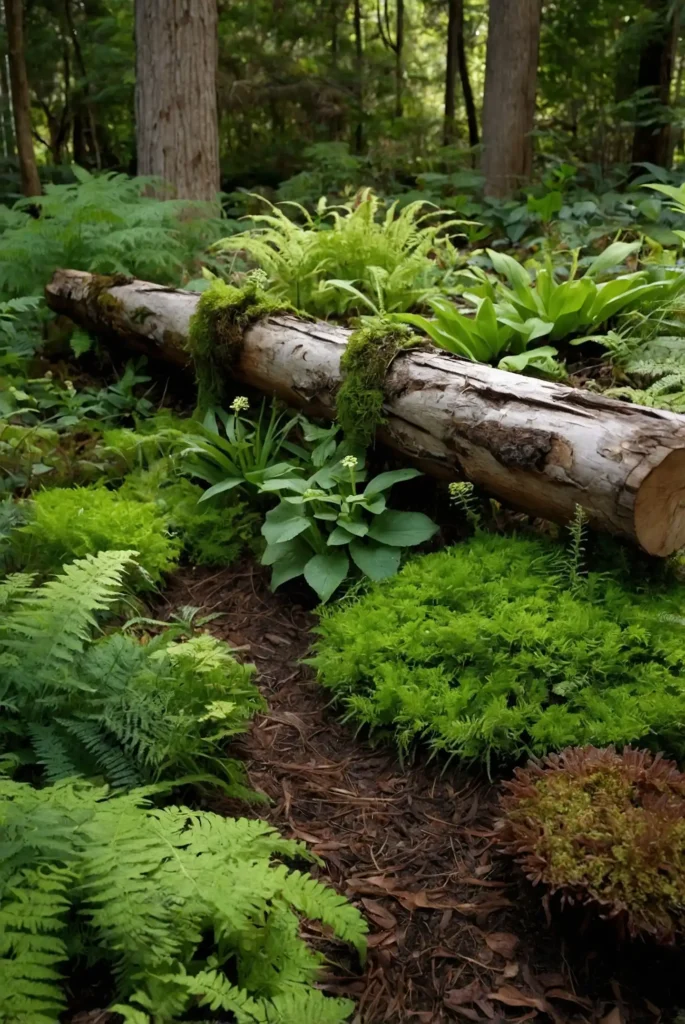
Recycle fallen logs or tree stumps into fascinating garden features by arranging them artistically throughout your shade area.
Tuck ferns, moss, and woodland flowers into the crevices.
Allow mushrooms and lichens to naturally colonize the wood over time.
This Victorian-inspired design celebrates the natural decomposition process while creating instant character.
The varied heights and textures create microhabitats for beneficial insects and small wildlife.
9: Monochromatic Shade Palette
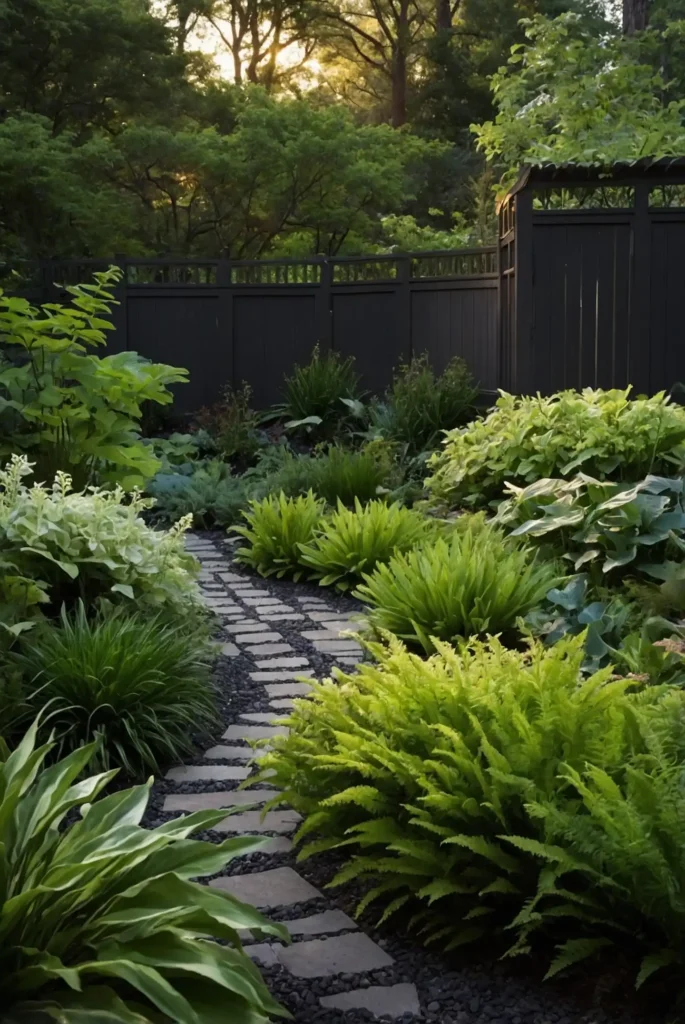
Create a sophisticated, cohesive look by limiting your shade garden to plants with similar coloration.
A garden of only white-variegated or chartreuse foliage creates dramatic impact.
Layer plants of different heights but similar colors for depth. The restricted palette allows textural differences to take center stage.
This approach is particularly striking at dusk when light-colored foliage seems to glow in the fading light.
10: Zen-Inspired Minimalism
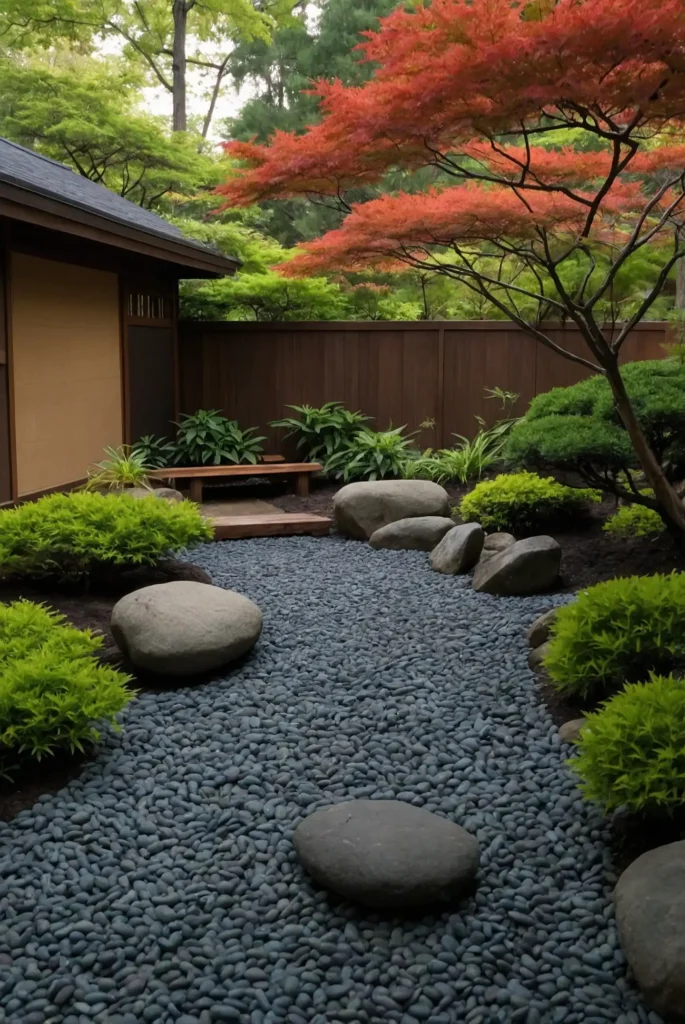
Strip your shade garden design down to essentials with a Japanese-inspired approach. Feature just a few perfect specimens of Japanese maples, bamboo, or azaleas.
Use raked gravel or fine mulch to create negative space around plantings. Incorporate carefully positioned stones or a simple water feature for meditation focus.
This uncluttered layout brings tranquility to shady spaces and requires minimal maintenance once established.
11: Native Woodland Recreation

Design your shade garden to mimic the forest floor ecosystems native to your region. Research which understory plants naturally grow in nearby woodlands.
Layer these native plants as they would appear in nature, with shrubs, perennials, and groundcovers.
This ecological approach supports local wildlife and typically requires less intervention.
The seasonal rhythms of native plants ensure your garden has interest throughout the year.
12: Secret Garden Room
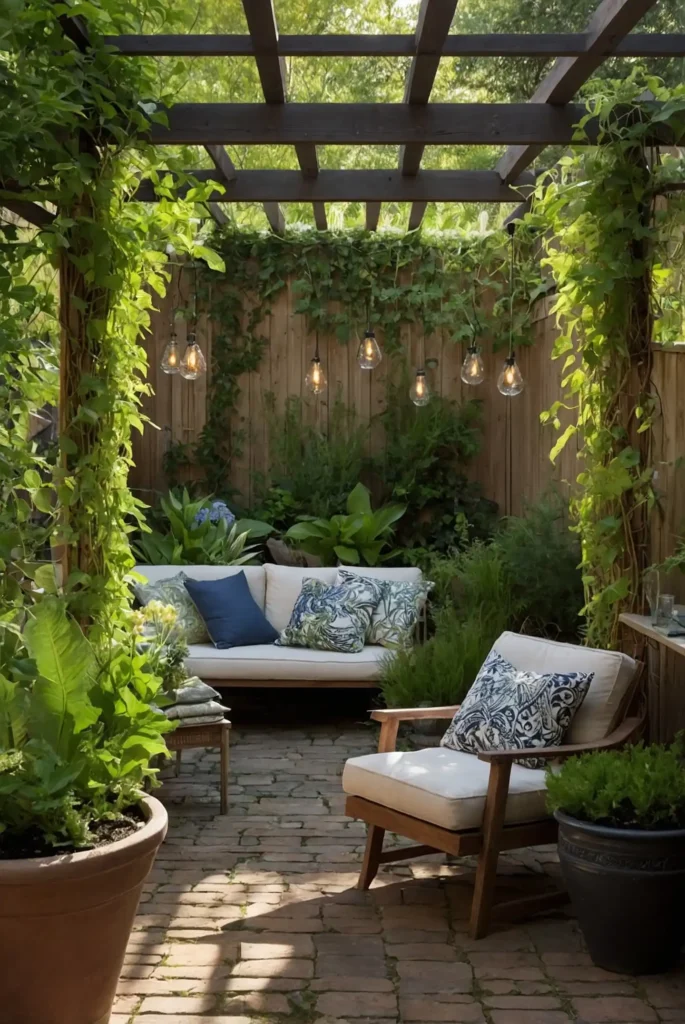
Create an enclosed shade garden “room” using tall shrubs, trellises, or fencing draped with shade-tolerant vines. Place comfortable seating inside this secluded space.
Plant fragrant shade lovers like sweetbox or lily-of-the-valley to engage multiple senses. Add wind chimes or subtle water features for ambient sound.
This intimate layout transforms shade into an advantage by creating a cool retreat from summer heat.
13: Shade Cutting Garden
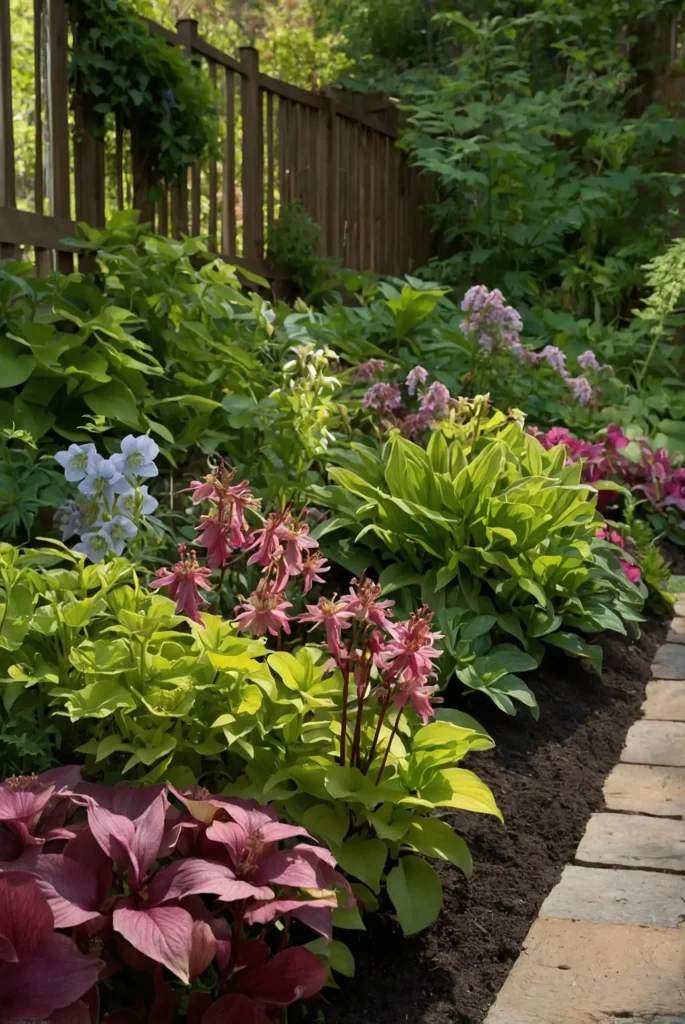
Defy expectations by designing a cutting garden in partial shade. Focus on shade-tolerant flowers like astilbe, toad lily, and hellebores that make excellent cut specimens.
Arrange plants in easy-to-access rows or blocks for convenient harvesting. Include foliage plants like hostas and ferns for greenery in arrangements.
This functional layout ensures you’ll have materials for indoor bouquets from typically unproductive garden areas.
14: Sculptural Shade Gallery
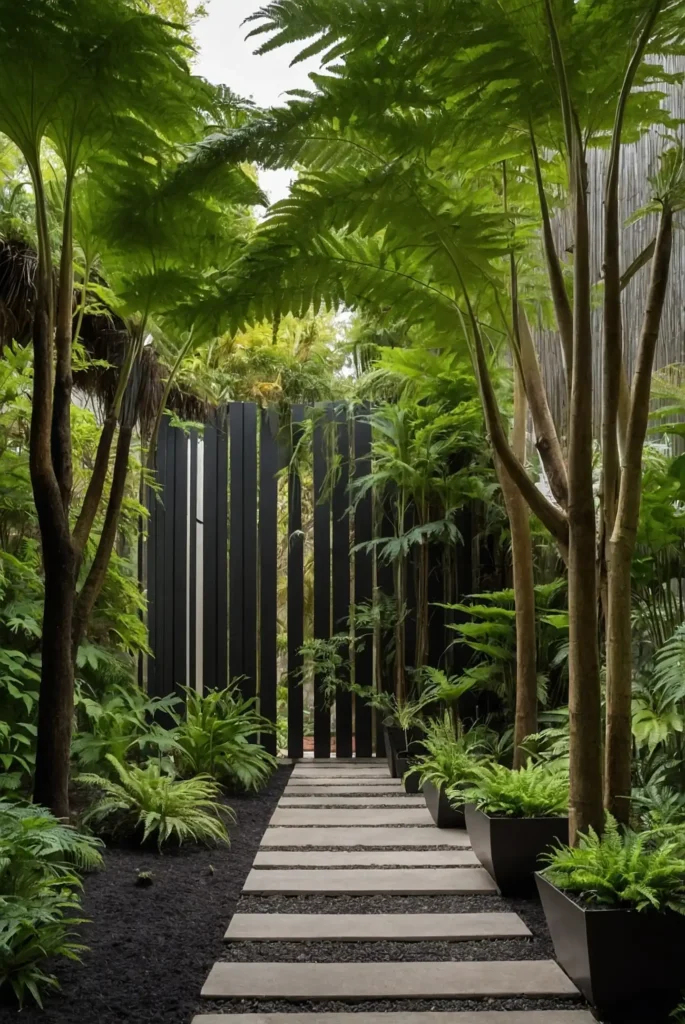
Turn your shade garden into an outdoor art gallery by featuring sculptural plants with distinctive forms.
Focus on architectural species like Japanese aralia, rodgersia, and tree ferns.
Position these against simple backgrounds like walls or hedges to highlight their shapes. Add artistic garden ornaments that complement rather than compete with the plants.
This curator’s approach works well in contemporary landscapes and small urban gardens.
15: Edible Shade Layout

Challenge the notion that food can’t be grown in shade by designing a productive shade garden. Focus on leafy greens, herbs, and woodland edibles like ramps and mushrooms.
Utilize vertical space with trellised shade-tolerant berries like honeyberry. This practical layout turns challenging spaces into productive food sources.
The cooler environment often extends the growing season for many leaf crops compared to sunny gardens.
16: Shade Tapestry Border
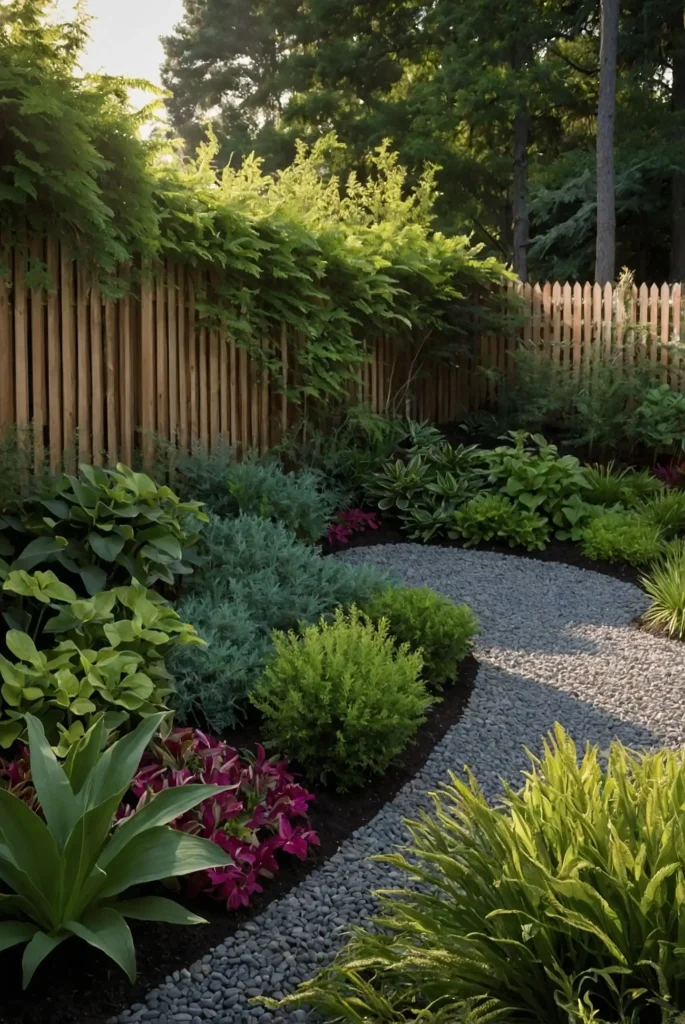
Design a living tapestry by planting ribbon-like drifts of shade perennials along a fence or wall. Arrange plants in sweeping curves rather than rigid blocks.
Choose varieties with complementary textures and colors that flow into one another. This layout works beautifully for transitional areas between sun and shade.
The layered, flowing design creates a naturalistic feel even in smaller garden spaces.
17: Dry Shade Solution
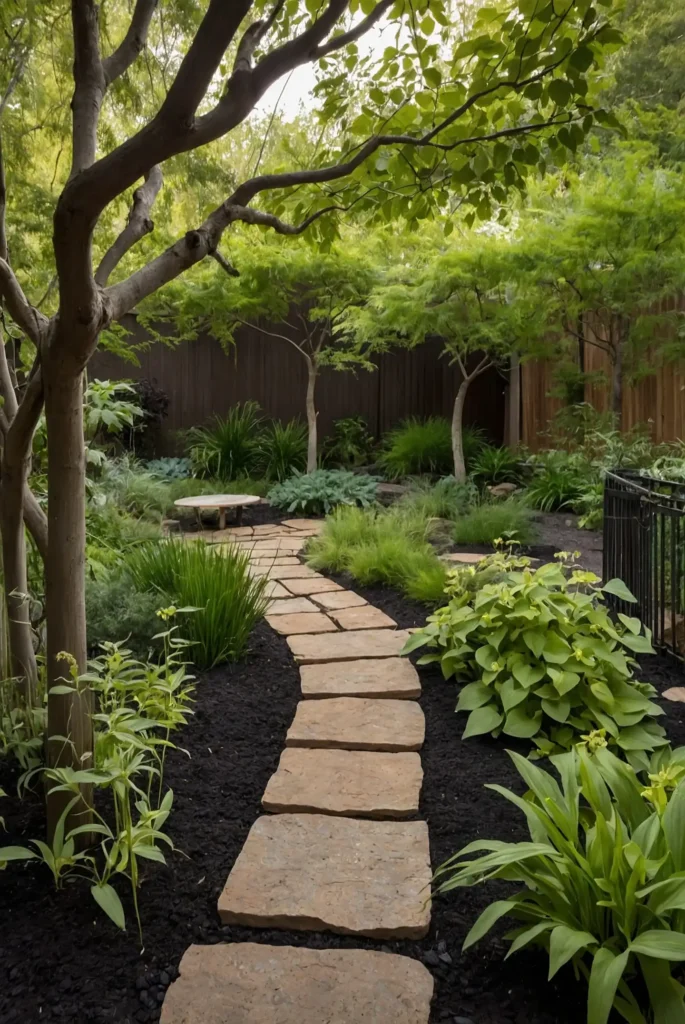
Transform challenging dry shade areas under mature trees into distinctive garden spaces.
Focus on drought-tolerant shade plants like epimedium, Solomon’s seal, and certain sedges.
Use gravel mulch to conserve moisture while providing good drainage. This specialized layout acknowledges difficult conditions rather than fighting them.
The resulting garden requires minimal maintenance and watering once established.
Conclusion
Your shade garden doesn’t have to be an afterthought. With these design layouts, you can transform those challenging dark spots into the most captivating areas of your landscape.
Start small, experiment, and watch your shade garden become your favorite retreat.

